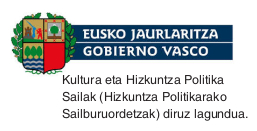Enirio-Aralar mendietako abereen eta basoen ustiapena aro berrian zehar
Abstract
The Enirio-Aralar mountains’ woods didn’t have to withstand hard exploitations until the XVIIIth century. Until that time citizen of the Unions only extracted the wood and timber they needed, without doing almost any industrial exploitation. In the XVIIIth century, when downward oak graves were exhausted in order to make coal, ships and weapon dramers. Simultaneously, what until then had been a local cattle breeding, turned into mid transhumance: the flocks of the coast and its environs started to spend the summer in the Enirio-Aralar mountains. The two mentioned factors —wood exploitations and the arrival of foreign flocks— most of all at the end of the XVIIIth century and at the beginning of the XIXth century, caused the Enirio-Aralar wood’s backward step. During the XIXth and XXth centuries the deforestation increased, giving native mountains the image we know nowadays.
Downloads
License
Copyright (c) 2001 Uztaro

This work is licensed under a Creative Commons Attribution-NonCommercial-ShareAlike 4.0 International License.
















